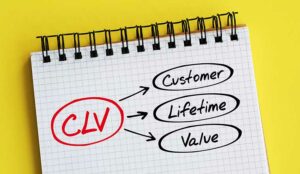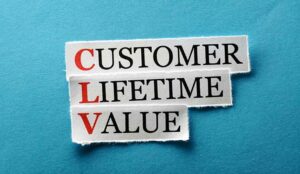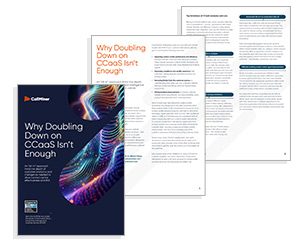The metrics you use to track your organization’s growth help shape strategic decisions and inform stakeholders of key challenges you may be facing. One metric commonly tracked by businesses is customer lifetime value (CLV).
CLV is a great way to keep track of your customers’ overall perception of your brand, but it can also serve to signal gaps in the omnichannel customer experience, revenue you may be leaving on the table, improvements that can be made in marketing, and more.
In order for your team to make the most of this valuable metric, you will need to know both what it is and precisely why it should be used.
Learn what the experts at Forrester believe will be the tectonic shifts taking place for customer service and customer experience pros in 2022.
Definition of Customer Lifetime Value
Customer lifetime value measures the total amount of revenue any of your customers are worth to your business from the beginning of the customer journey to the very end when they cease being your customers.
To be most effective, CLV takes into account the overall cost of acquisition applicable to each customer, the amount of revenue they contribute to your company, and the cost of retention for each customer as well.
This is all factored into an otherwise simple calculation in which the average value of each purchase is multiplied by the number of times your customer places a new purchase from your business. This figure is, in turn, multiplied by the length of the customer relationship, which is generally measured in years.
Customer Lifetime Value Use Cases
Customer lifetime value is the kind of metric you should turn to if you are unsure of the cost you would incur in attracting or retaining customers and would like to ground your strategy in the knowledge that your efforts would produce tangible profits.
For instance, CLV can clarify how much money you can expect to make from a single customer (or a highlighted group of customers) over a given period of time. This makes adjusting marketing and retention efforts easier as you can avoid overspending for limited ROI.
Another way that you can use CLV to better your business is by dividing your user base into segments and identifying your highest value customers.
Once you have identified the customers who represent the bulk of your business’s annual profits, you can better adapt your business practices to favor them instead of engaging in unnecessary spending to attract customers that do not deliver the kind of revenue your company depends on.
CLV’s utility extends beyond basic budgeting concerns, though – you can also leverage insights gleaned from your CLV figures to focus on products your customers want most.
Consolidating product lines in this way to match the most prominent interests of your customers can make a big difference in your business’s performance.
Why Measure Customer Lifetime Value?
CLV may appear to be closely related to other metrics, such as net promoter score (NPS) and CSAT (customer satisfaction), on the surface.
However, since it is based on concrete figures and revenue instead of the opinions implied by net promoter scores and CSAT measurements, CLV can contribute precise insights into the real impact different customer segments have on your company’s performance.
CLV can be used to determine not only which customers are creating the most revenue for your business, but also whether the lower value customers cost more to keep or acquire. These details are critical for strategizing your company’s future development.
How to Boost Customer Lifetime Value
Driving better CLV results comes down to balancing improvement with customer communication. Customers will respond to well-executed product and service improvements favorably in many cases, so long as you take the time to communicate such improvements to them.
Improvements can be introduced at nearly any stage of the customer journey to boost CLV. For instance, simplifying your returns policy, setting up a rewards program, or even simply keeping in touch with your customers over the long term with relevant offers and upsells can make a noticeable difference in customer lifetime value.
Using Customer Lifetime Value for Call Centres
CLV has its place in any organization, including within the scope of a call centre’s operations. There are numerous facets of a business’s operations that call centres and contact centres support and CLV can be applied across many of these to provide critical insights into the call centre’s overall performance.
The customer-facing support side of call centre operations alone benefits greatly from the use of CLV to help determine whether customers are satisfied with the level of service or quality of the product they have received.
For example, high retention costs caused by a multitude of support requests could suggest a change in service or product design is in order.
Customer lifetime value makes keeping track of the total value derived from your current customer base much more straightforward. By using this metric correctly, you can keep your organization on the right track towards sustainable growth, rooted in the interests of your most valuable customers.
This blog post has been re-published by kind permission of CallMiner – View the Original Article
For more information about CallMiner - visit the CallMiner Website
Call Centre Helper is not responsible for the content of these guest blog posts. The opinions expressed in this article are those of the author, and do not necessarily reflect those of Call Centre Helper.
Author: CallMiner
Published On: 7th Apr 2022
Read more about - Guest Blogs, CallMiner




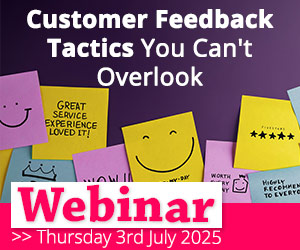
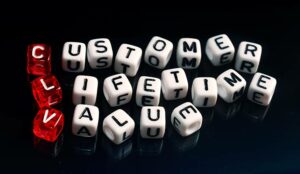
 CallMiner is the leading cloud-based customer interaction analytics solution for extracting business intelligence and improving agent performance across all contact channels.
CallMiner is the leading cloud-based customer interaction analytics solution for extracting business intelligence and improving agent performance across all contact channels. 
